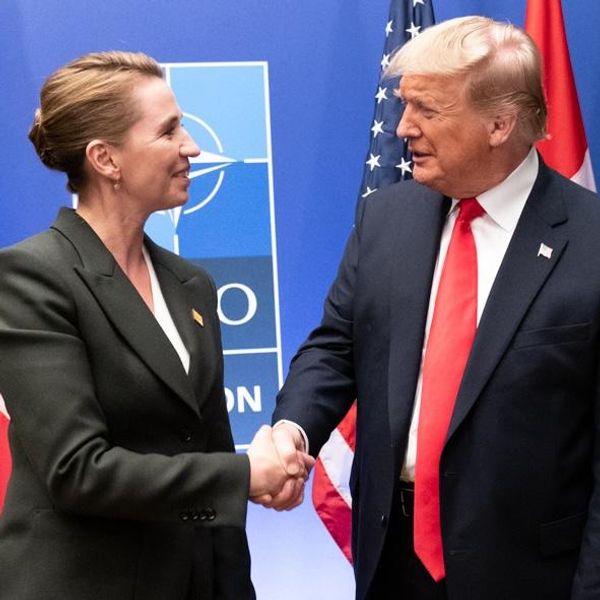The United States Congress has, once again, abdicated one of its most basic responsibilities: passing the legislation necessary to fund the federal government before the start of the fiscal year.
Under so-called “regular order,” 12 appropriations bills should be passed by Congress and signed by the President prior to October 1. Unfortunately, “regular order” has only been achieved a handful of times since the Congressional Budget and Impoundment Control Act of 1974 was passed. Now fiscal years start in one of two ways: with a short term “Continuing Resolution” (CR) to keep the government operating, or a government shutdown that keeps only the most basic functions of the federal government running.
My organization, Taxpayers for Common Sense, is on the record with our opposition to stop-gap CRs (and shutdowns). Congress should do its job and not act like college students who never showed up for class and are now facing the final exam. One of our concerns is that CRs are “must pass” legislation and everyone knows it. That means all kinds of extraneous measures hitch a ride to the Resolute Desk and presidential signature in the pressure to keep the government functioning.
And this is true of the draft CR for Fiscal Year 2022, which is needed to keep the government running past the start of Fiscal Year 2023 — October 1. The bill, which must be passed and signed by the president by midnight Friday, includes the “Ukraine Supplemental Appropriations Act, 2023.” The extra funding in the bill is roughly $12.3 billion, including $7.8 billion in programs under the purview of the Pentagon, and another $4.5 billion for the Economic Support Fund for Ukraine administered by the State Department. If you add so-called “drawdown authority” of $3.7 billion for equipment from the U.S. stockpile, the total value of the package of Ukraine aid is just over $16 billion.
What the Biden Administration requested, versus what the supplemental appropriations act provides, are two vastly different things. Congress has the responsibility to review budget requests and amend them prior to final passage. In the Pentagon portion of the Ukraine aid bill, the Congress added just under $650 million across several line items. You can check out this chart to see where the Congress giveth and where it taketh away.
In some cases, neither the requested amounts nor changes are surprising. But others should raise some eyebrows.
The Biden Administration supplemental requests for Research, Development, Test and Evaluation (RDT&E) for the three military departments and the “Defense-wide” account (which covers Special Forces and other funds not specific to a military department) are very uneven. And Congress grants those requests with very open-ended, boilerplate language “to respond to the situation in Ukraine and for related expenses.”
For example, the Army and Navy get modest RDT&E increases above what was originally included in the President’s 2023 budget request — in the range of $2 million to $3 million. But the Air Force and Defense-wide accounts requested an additional $99.7 million and $31.2 million, respectively after just a few months. That’s real money in RDT&E. So, what are the Air Force and, presumably, Special Forces developing or testing to, “respond to the situation in Ukraine”? Since so much money was granted with so little explanatory language, it may be classified, and we’ll never know.
Two procurement accounts also take healthy increases. One Air Force procurement account receives $437.9 million. That’s $170 million more than the Biden Administration supplemental request in the CR. The bill language accompanying this increase is the same boilerplate, “to respond to the situation in Ukraine and for other expenses.”
The biggest Congressional increase is in a line item for Army procurement of ammunition. The Biden Administration requested $13 million “for anti-vehicle munitions required for the European theater of operations.” But the Continuing Resolution gives them more than half a billion dollars. This $540 million is for, “expansion of public and private plants, including the land necessary therefor, and procurement and installation of equipment, appliances, and machine tools in such plants, for the purpose of increasing production of critical munitions to replace defense articles provided to the Government of Ukraine or foreign countries that have provided support to Ukraine at the request of the United States.”
This means taxpayers will now be paying for the costs of expanding plants that produce ammunition, even if the plant is privately owned by a government contractor. The language doesn’t indicate that this money would be used for loans to defense contractors, but for outright purchase of land for a new or expanded plant and all the interior equipment to make it viable. That’s a capital investment for what should hopefully be a short-term need. That doesn’t make sense and is a pretty sweet deal for one of the few sectors of the economy that doesn’t seem to need propping up.
The biggest tranche of money in the Pentagon part of the CR is $4.7 billion for Defense-wide Operations and Maintenance (O&M). Of this total, $3 billion is for the so-called Ukraine Security Assistance Initiative that has been funded by Congress since at least FY16. Another $1.5 billion may be used by the Pentagon to make whole certain O&M and Procurement accounts including, “replacement of defense articles from the stocks of the Department of Defense, and for reimbursement for defense services of the Department of Defense and military education and training, provided to the government of Ukraine or to foreign countries that have provided support to Ukraine at the request of the United States.”
In other words, that $1.5 billion is not actually going to Ukraine; it’s either going to defense contractors to replace the equipment from U.S. stockpiles that we shipped to Ukraine earlier in the conflict or, potentially, to other countries to reimburse them for their support of Ukraine.
This type of reimbursement is likely to again appear in some future Ukraine assistance package due to the $3.7 billion in additional drawdown authority mentioned above. If the U.S. does draw from our own stockpiles to ship equipment to Ukraine, the Pentagon will certainly seek to replace that equipment in the future. More work and more money for defense contractors.
On the upside, Congress is adding $2 million to the Pentagon Inspector General account to affect more oversight of aid to Ukraine. Taxpayers for Common Sense recently spearheaded a letter seeking just such oversight.
But between the $1.5 billion that will be used, in part, to replace defense articles taken from DoD stockpiles and more than half a billion dollars to help government contractors improve or expand their privately owned plants, let’s admit that not all this aid money is going to Ukraine. Instead, it’s corporate welfare for defense contractors.
















